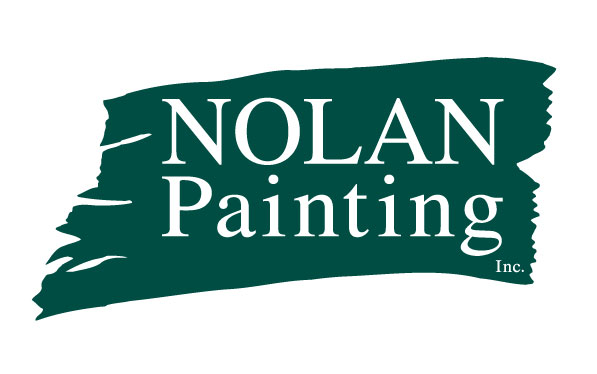Avoid DIY Downfalls by Removing Wallpaper the Right Way
Whether you and your spouse are just buying your first home or you’re ready to update your living room after years of looking at that old, colonial damask wallpaper, a fresh coat of paint should feel like a fresh start. You want the space to feel clean and new. When you’re ready to strip your old wallpaper and start fresh, it may be tempting to look for shortcuts and turn to DIY methods like steamers and “paper tigers”- but in reality these “shortcuts” are just as likely to leave your drywall gouged and covered in residual glue. That’s not really what we’d call a clean, fresh start on your new walls. As Gerald Bishop, wallpaper expert and owner of Wallcoverings in Fresno, says, “There’s an art to stripping wallpaper.”[1. “How to Remove Wallpaper.” HGTV. Accessed December 18, 2015. http://www.hgtv.com/design/decorating/design-101/how-to-remove-wallpaper.] If you’re ready to modernize your home, removing wallpaper with the help of professionals can save you the hassle of damaged drywall – not to mention the wasted time and money that you may end up sinking into ineffective methods.
Assessing your Wallpaper
So, you’re ready to get started! The first step to removing wallpaper is to peel back a few layers of history and see what the situation looks like under the surface. We’ll start out by assessing how the original paper was originally attached to determine the best method for removal. Oftentimes, we can see how the wallpaper is currently adhered and how many layers there are by checking under the outlet covers. Depending on the style and age of the home, we may have to peel back the paper to determine if there is plaster or Sheetrock underneath, and whether the wall was properly primed and prepped before it was originally papered.
Sometimes the wallpaper was attached directly to the drywall without a layer of primer in between and now it’s bonded to the Sheetrock. If that’s the case, there’s no way to get it off without tearing the walls apart. For these types of walls, we prime the wall and skim the seams with spackle and plaster – then you can paint over the paper and never know it’s there. That’s one of the only times we would recommend painting over it. It’s a rare instance, and a last resort.
The “Paper Tiger” & Other DIY Downfalls
The Paper Tiger is a perforation tool that you can roll over the surface of the wall, almost like a pizza cutter, and it’s frequently sold to DIY wallpaper removers at the local hardware store. However, we DO NOT recommend them. Abrasion tools often cause enormous damage, puncturing thousands of tiny holes in the drywall. Then you’re faced with a new, costly chore: skimming the walls with spackle and plaster to repair the surface. Professionals remove your wallpaper almost entirely with water, using 60 grid sandpaper to scour vinyl papers and penetrate to the glue if necessary.
Another common DIY downfall: not effectively and diligently removing the glue from your drywall before repainting. This is a common problem we see, where homeowners have called out our team to investigate paint that’s bubbling up from the wall like fish scales. The paint usually starts to bubble up and peel away near the ceiling, and around the edges of windows and trim where a previous homeowner tried to strip the wallpaper. What happened is that the previous owner likely washed the walls as high as they could reach, but then those top two feet were left with residual glue. That causes the new paint to peel off at the top. Sometimes the new homeowner thinks the peeling is moisture-related, but it’s actually wallpaper glue that wasn’t properly removed.
The Professional Advantage to Removing Wallpaper: Preparation and Patience
Being equipped and trained to adequately prepare your room for wallpaper removal is a key professional advantage. Wallpaper removal requires a lot of water. We seal off your floors to avoid damaging hardwood, tile, or carpeting. We also remove all the face plates from your electrical sockets, and tape off the wires with electrical tape to avoid any risk of shock as well as to protect the integrity of your wiring.
After preparing the room, the process of wallpaper removal is a long and laborious one. We work by sections- it requires patience and diligence. We soak each glued area and wait for it to soften. If you rush it, you’re going to end up scraping tiny chunks off and wasting your time. You can go to the paint store and buy additives for the water, and you can even buy steamers that purport to speed the process, but professionals just use water and spend the necessary time. You have to be thorough in cleaning the walls and getting all the glue off with a Brillo pad, otherwise you’re going to end up with issues down the road such as the bubbling paint we often see.
Voila! Unveiling your Wall’s New Potential
So, the adhesive have been softened, the paper stripped, and there’s the big reveal: a fresh, bare sheet of drywall, ready for a brand new look. After the removal, consult with your contractor to determine the best route moving forward. After you remove the glue, you may have fixture scrapings and hidden scratches. You’ll have to seal the wall with an alkyd-based primer to protect against any residual glue and scratches before you repaint, but after that you can pick out a new interior color and finish up the job.
If you’re considering a new interior for your Main Line home, the Nolan team has the skills and experience to professionally strip your wallpaper and repaint your drywall. We’ve been painting and renovating houses along the Main Line since 1979 –contact us today to see what we can do for you!

